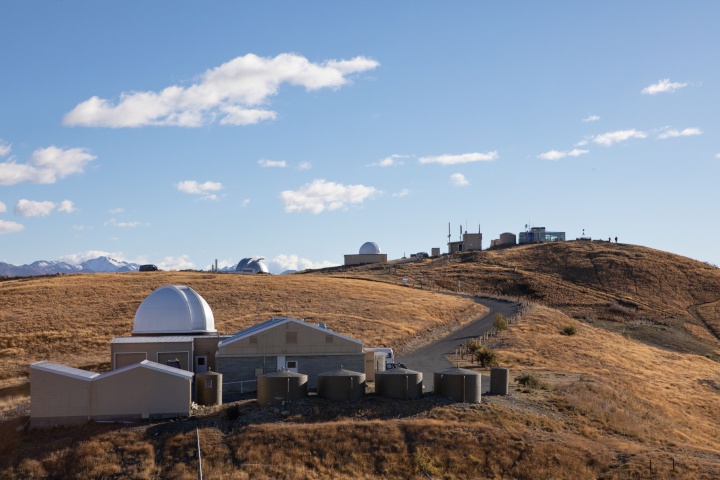Canterbury Astronomers Involved In NASA DART Mission
University of Canterbury astronomers and students keenly watched the DART mission in real time at a watch party on campus, including UC researchers who are part of the DART mission.

University of Canterbury's Mt John Observatory
University of Canterbury astronomers are excited to be contributing data to today’s NASA mission to move an asteroid, with data from the University of Canterbury’s Mt John Observatory at Ōtehīwai, Takapō (Tekapo).
Humanity’s first attempt to move a celestial body, the DART spacecraft impacted the asteroid’s moon today (Tuesday NZ time).
University of Canterbury planetary astronomer
Senior Lecturer Dr
Michele Bannister says, “This is technology that will
help work toward removing a natural hazard entirely –
something we can't do with tsunami or
volcanoes”.
“We have been and will be observing the asteroid for pre-and post-impact photometry with the 1.8m MOA telescope at our UC Mt John Observatory, providing New Zealand’s contribution to this NASA mission,” she says.
“The plan was to nudge an
asteroid and see what happens. That way if one is ever found
that’s a threat, we can decide how best to encourage it to
move so it doesn't hit us!”
NASA’s Double Asteroid Redirection Test, or DART, is the world’s first full-scale planetary defense test, demonstrating one method of asteroid deflection technology. True to its name, DART is a focused mission, proving that a spacecraft can autonomously navigate to a target asteroid and intentionally collide with it (called a kinetic impact) at roughly 6 kilometres per second.
Its target, which poses no
threat to Earth, is the asteroid moonlet Dimorphos, which
orbits a larger asteroid named Didymos. As part of NASA’s
larger planetary defense strategy, DART will simultaneously
test new technologies and provide important data to enhance
our modeling and predictive capabilities and help us better
prepare for an asteroid that might pose a threat to Earth,
should one be discovered.
University of Canterbury postdoctoral research fellow Dr Ryan Ridden is leading the data analysis, and several postgraduate and undergraduate students are involved in the observations.
“It’s really exciting to be able to contribute data to a NASA mission,” Dr Ridden says. “Primarily I’ve been working to ensure the data from the 1.8 m MOA telescope at our observatory is sensitive enough to see the effect of the collision on Dimorphos. This effect is small, but we’ll see a change in how long the moon takes to orbit Didymos.”
To really understand the effect of the impact, the UC research team will continue observing Didymos for the next few months, alongside observatories around the world.


 RNZ: Parts Of Power System Could Be Out For 36 Hours In Event Of Extreme Solar Storm
RNZ: Parts Of Power System Could Be Out For 36 Hours In Event Of Extreme Solar Storm NZAS: New Zealand Association Of Scientists Awards Celebrate The Achievements Of Scientists And Our Science System
NZAS: New Zealand Association Of Scientists Awards Celebrate The Achievements Of Scientists And Our Science System Stats NZ: Retail Spending Flat In The September 2024 Quarter
Stats NZ: Retail Spending Flat In The September 2024 Quarter Antarctica New Zealand: International Team Launch Second Attempt To Drill Deep For Antarctic Climate Clues
Antarctica New Zealand: International Team Launch Second Attempt To Drill Deep For Antarctic Climate Clues Vegetables New Zealand: Asparagus Season In Full Flight: Get It While You Still Can
Vegetables New Zealand: Asparagus Season In Full Flight: Get It While You Still Can  Bill Bennett: Download Weekly - How would NZ telecoms cope with another cyclone
Bill Bennett: Download Weekly - How would NZ telecoms cope with another cyclone



